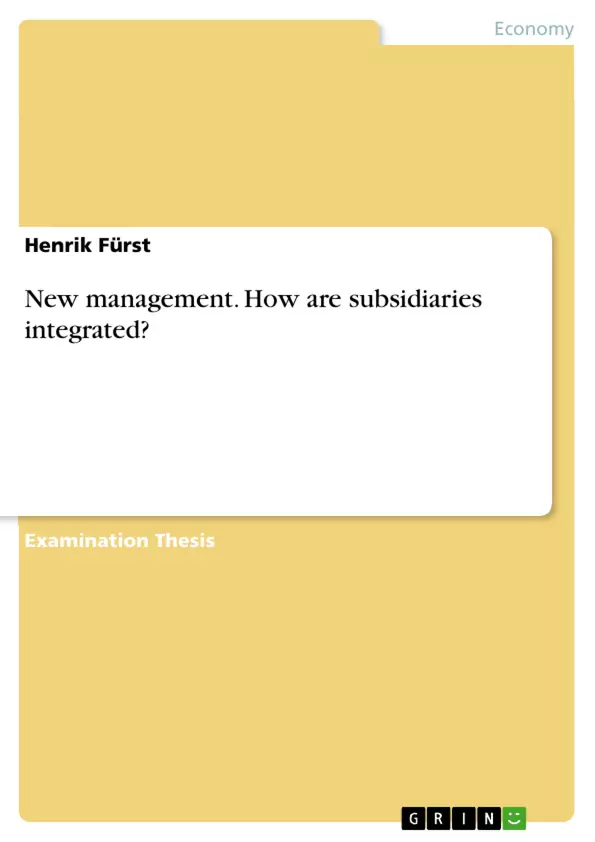What are the most important steps for a Headquarter to be successful with a foreign subsidiary? Which role do cultural differences play within the integration process of HQ and subsidiary?
Wal-Mart, the world's most powerful and largest retailer, is intensifying its activities in India. After failing with a Joint Venture with an Indian company, its subsidiary Best Price Modern Wholesale is now focusing on the Indian wholesale sector, instead of the end consumers.
This topic is of relevance because Multinational Corporations (MNC) often forget to integrate their subsidiaries, especially the foreign subsidiaries. The integration is of importance because it generates a successful flow. Therefore this report will focus on Wal-Mart as the Headquarter and takes a closer look at its acceptance and integration of a foreign market. Best Price Modern Wholesale is a subsidiary of Wal-Mart and is a perfect case of how a subsidiary integration process can fail and how to manage the failure towards possible success.
Inhaltsverzeichnis (Table of Contents)
- Abstract
- Abbreviations
- Introduction
- Problem background
- Problem formulation
- Introduction to the Headquarter Wal-Mart
- The case of Wal-Mart in India
- Why change the management
- Kotter's 8 stage model
- Cultural differences
- Hofstede's cultural dimensions
- US-American vs. Indian culture
- Overall Analysis and findings
- Hofstede's analysis of culture - impact on Wal-Mart
- Kotter's 8 stage model analysis and impact on Wal-Mart
- Conclusion
- References
Zielsetzung und Themenschwerpunkte (Objectives and Key Themes)
This report investigates the relationship between multinational cooperation and the integration of new subsidiaries. It examines how multinational corporations (MNCs) are increasingly seen as networks of differentiated subsidiaries, each contributing unique competencies. The report explores the autonomy granted to subsidiaries by MNCs, ranging from high to low, and its impact on international interdependence. Additionally, it discusses the competitive advantages of multinational skills in the global marketplace.
- The relationship between multinational cooperation and subsidiary integration
- The role of subsidiaries in creating and contributing unique competencies to MNCs
- The impact of subsidiary autonomy on international interdependence
- The competitive advantages of multinational skills in a global marketplace
- The influence of cultural differences and change management on subsidiary integration
Zusammenfassung der Kapitel (Chapter Summaries)
The report begins by introducing the problem background and problem formulation, establishing the context for the analysis. It then delves into the specific case of Wal-Mart in India, examining the company's headquarter and its expansion into the Indian market. The following chapters explore the reasons behind the need for management change, particularly focusing on Kotter's 8-stage model for organizational transformation and the impact of cultural differences, utilizing Hofstede's cultural dimensions framework.
The report further analyzes the findings from both Kotter's and Hofstede's models, applying them to the specific case of Wal-Mart in India. It examines how cultural differences between the US and India might influence the integration process and potential challenges associated with it.
Schlüsselwörter (Keywords)
The report focuses on key concepts such as multinational cooperation, subsidiary integration, cultural differences, change management, and organizational transformation. It utilizes frameworks from renowned scholars like Kotter and Hofstede to analyze the dynamics of integrating new subsidiaries within multinational corporations. The report also explores the impact of subsidiary autonomy on international interdependence and the competitive advantages of multinational skills in a global marketplace.
- Quote paper
- Henrik Fürst (Author), 2015, New management. How are subsidiaries integrated?, Munich, GRIN Verlag, https://www.grin.com/document/353530



